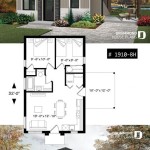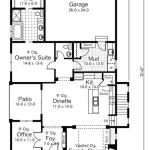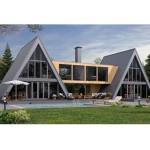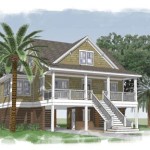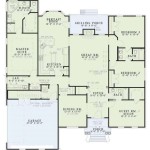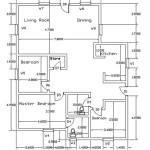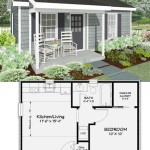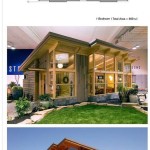French Country Style House Plans: A Comprehensive Guide
French Country style house plans evoke a sense of rustic elegance and timeless charm. Drawing inspiration from the countryside estates of France, these homes are characterized by their warm, inviting façades, symmetrical designs, and use of natural materials. This comprehensive guide explores the key elements, defining features, and practical considerations for those considering a French Country style home.
These homes offer a distinct alternative to modern, minimalist designs, providing a comfortable, livable space that prioritizes character and connection to nature. The enduring popularity of French Country architecture stems from its ability to combine sophisticated aesthetics with practical, family-friendly layouts.
Key Architectural Elements of French Country Homes
French Country architecture is defined by a specific set of design elements that distinguish it from other styles. Understanding these elements is crucial for accurately identifying and appreciating the nuances of this architectural form.
Symmetrical Façades: A cornerstone of French Country design is the symmetrical arrangement of windows, doors, and other architectural features. This symmetry lends a sense of balance and formality to the home's exterior, creating a visually appealing and harmonious appearance. The main entrance is often centered, flanked by an equal number of windows on either side. This symmetry extends to dormers, gables, and other structural components.
Steeply Pitched Roofs: French Country homes typically feature steeply pitched roofs, often clad in slate, tile, or wood shingles. These roofs not only contribute to the aesthetic appeal of the home but also provide practical benefits, such as efficient water runoff and improved insulation. The steep pitch also allows for the creation of attic spaces that can be used for storage or converted into living areas.
Arched Windows and Doors: Arches are a recurring motif in French Country architecture, adding a touch of elegance and sophistication. Arched windows and doors are commonly incorporated throughout the home, softening the lines and creating a sense of openness. These arches can be subtle or more pronounced, depending on the overall design of the home.
Stone or Brick Exteriors: While some French Country homes feature stucco exteriors, many are constructed using natural stone or brick. These materials add to the rustic charm of the home and provide a sense of solidity and permanence. Stone or brick can be used to clad the entire exterior or to create accents around windows, doors, and other architectural features.
Dormers: Dormers are a common feature of French Country homes, adding visual interest to the roofline and providing light and ventilation to the attic space. Dormers can be gabled, arched, or shed-style, depending on the overall design of the home. They often feature decorative details, such as shutters or window boxes.
Shutters: Functional or decorative shutters are frequently incorporated into French Country homes, adding to the charm and character of the exterior. Shutters can be made of wood, metal, or composite materials and are typically painted in a contrasting color to the exterior cladding.
Interior Design Principles in French Country Homes
The interior of a French Country home is as important as its exterior. It typically features a warm, inviting atmosphere with a focus on comfort and functionality. Natural materials, soft colors, and rustic details are prevalent throughout the interior design scheme.
Open Floor Plans: While traditional French Country homes may have featured more compartmentalized layouts, modern interpretations often incorporate open floor plans. This allows for greater flexibility and flow between living spaces, making the home feel more spacious and inviting. Open kitchens that flow into dining and living areas are common.
Exposed Beams: Exposed wooden beams are a defining feature of French Country interiors, adding a rustic and architectural element to the space. Beams can be left natural or painted in a light color to complement the overall design scheme. They are often incorporated into ceilings, adding visual interest and character to the room.
Natural Stone and Wood Flooring: Natural stone and wood flooring are common materials used in French Country interiors. These materials add warmth and texture to the space, creating a connection to nature. Stone flooring is often used in kitchens and bathrooms, while wood flooring is more common in living areas and bedrooms.
Neutral Color Palette: French Country interiors typically feature a neutral color palette, with soft shades of white, cream, beige, and gray dominating the space. These colors create a sense of calm and serenity, allowing the architectural details and furnishings to stand out. Accents of color can be introduced through textiles, artwork, and accessories.
Comfortable Furnishings: Comfort is a priority in French Country interiors. Furnishings are typically upholstered in soft fabrics, such as linen, cotton, or velvet. Antique or vintage pieces are often incorporated into the design scheme, adding character and history to the space. Overstuffed sofas, armchairs, and throw pillows create a cozy and inviting atmosphere.
Antique Décor: Integrating antique furniture and décor is a hallmark of the French Country style. This could include weathered wooden tables, ornate mirrors, vintage chandeliers, and antique china. These elements add a sense of history and authenticity to the home.
Practical Considerations When Choosing a French Country House Plan
Beyond the aesthetic appeal, several practical considerations are important when choosing a French Country house plan. These considerations relate to the size of the home, the layout, the materials used, and the overall cost of construction.
Size and Layout: French Country homes can range in size from small cottages to large estates. The size and layout of the home should be carefully considered to ensure that it meets the needs of the homeowner. Factors to consider include the number of bedrooms and bathrooms, the size of the living spaces, and the presence of any special features, such as a home office or a media room.
Materials: The choice of materials is crucial in achieving the authentic French Country look. Natural stone, brick, wood, and tile are all commonly used in French Country homes. The cost of these materials can vary widely, so it is important to factor this into the overall budget. Sustainable and locally sourced materials can be a good choice for both environmental and economic reasons.
Climate: The climate in which the home is built should also be considered when choosing a French Country house plan. In warmer climates, features such as large windows and covered porches can help to keep the home cool. In colder climates, features such as fireplaces and efficient insulation are essential for maintaining a comfortable indoor temperature. The orientation of the house on the lot is also important for maximizing sunlight and minimizing energy consumption.
Maintenance: French Country homes often require more maintenance than modern homes due to the use of natural materials and the presence of exterior details such as shutters and dormers. Regular maintenance, such as painting, sealing, and cleaning, is necessary to keep the home looking its best. The types of materials chosen can influence the amount of maintenance required.
Cost: The cost of building a French Country home can vary widely depending on the size of the home, the materials used, and the location. It is important to develop a realistic budget before starting the project and to work with a qualified builder who has experience in French Country construction. Unexpected costs can arise, so it is wise to build a contingency into the budget.
Landscaping: Landscaping plays a crucial role in complementing the architecture of a French Country home. Formal gardens, gravel pathways, and flowering vines add to the charm and character of the property. The landscaping should be designed to complement the home and to create a seamless transition between the interior and exterior spaces. Lavender, roses, and other fragrant plants are often used in French Country gardens.
Adapting to Modern Living: While maintaining the core aesthetic, modern French Country homes often incorporate contemporary amenities and technologies. This could include energy-efficient windows, smart home systems, and updated kitchen appliances. The key is to integrate these elements seamlessly without compromising the overall charm and authenticity of the design.

French Country Style House Plans For Classic 3 Bedroom Home

House Plan 52005 French Country Style With 3938 Sq Ft 4 Bed 3

Southern Style House Plan 4 Beds 3 Baths 3273 Sq Ft 1074 17 Houseplans Com

House Plan 66248 French Country Style With 3193 Sq Ft 4 Bed 3

Luxury French Country Style House Plan 5090 Grand Caymus

Plan 62159v 4 Bed French Country House With Summer Kitchen Plans Style

Plan 41425 Acadian Style House With Game Room 3175 Sq Ft
Dream French Country House Plans Floor Designs

The French Quarter Madden Home Design Designer House

Cobblestone House Plan French Country Archival Designs
Related Posts

